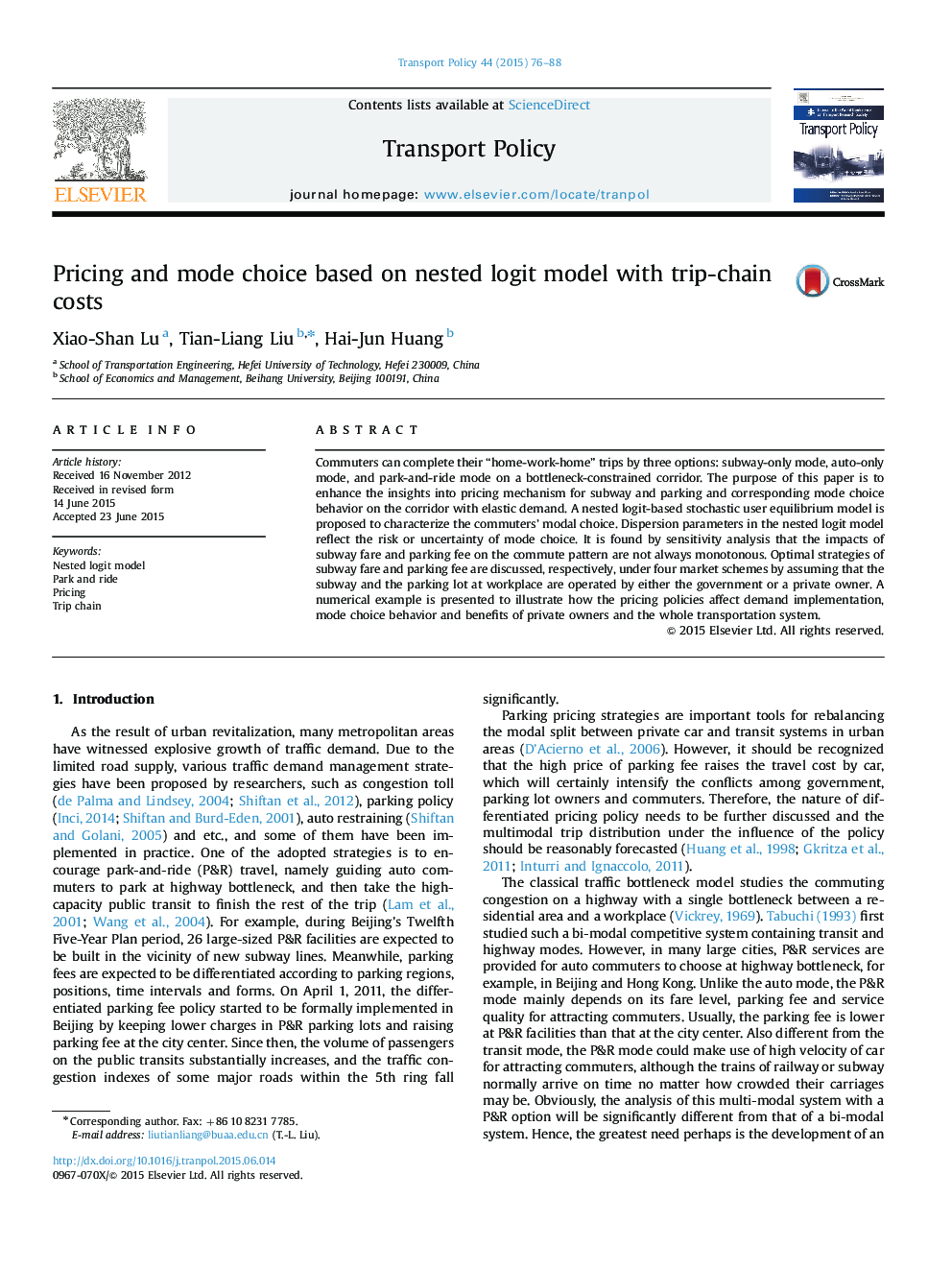| Article ID | Journal | Published Year | Pages | File Type |
|---|---|---|---|---|
| 7497619 | Transport Policy | 2015 | 13 Pages |
Abstract
Commuters can complete their “home-work-home” trips by three options: subway-only mode, auto-only mode, and park-and-ride mode on a bottleneck-constrained corridor. The purpose of this paper is to enhance the insights into pricing mechanism for subway and parking and corresponding mode choice behavior on the corridor with elastic demand. A nested logit-based stochastic user equilibrium model is proposed to characterize the commuters' modal choice. Dispersion parameters in the nested logit model reflect the risk or uncertainty of mode choice. It is found by sensitivity analysis that the impacts of subway fare and parking fee on the commute pattern are not always monotonous. Optimal strategies of subway fare and parking fee are discussed, respectively, under four market schemes by assuming that the subway and the parking lot at workplace are operated by either the government or a private owner. A numerical example is presented to illustrate how the pricing policies affect demand implementation, mode choice behavior and benefits of private owners and the whole transportation system.
Related Topics
Social Sciences and Humanities
Social Sciences
Geography, Planning and Development
Authors
Xiao-Shan Lu, Tian-Liang Liu, Hai-Jun Huang,
